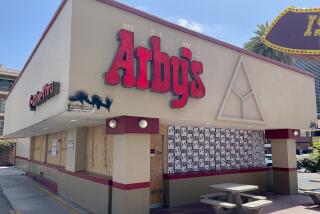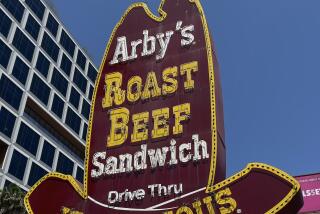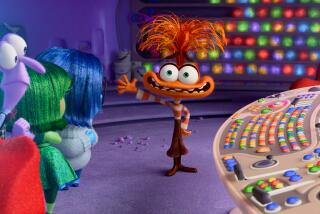Fading Into History
It was only decades ago that drive-in movie theaters joined mom and apple pie in a seemingly eternal pantheon of Americana.
But the announcement that one of the last two drive-ins in the San Fernando Valley will be replaced by a gleaming 26-screen mega-plex seems to be marching the drive-in movie theater right into the dustbin of history.
“This time, news of the death of the drive-in has not been exaggerated,” said Cal State Northridge English professor Jack Solomon, an expert on Southern California culture.
The impending closure later this year of the Winnetka Drive-In in Chatsworth is not just the end of a theater, but signals the death of the storied Southern California car culture, he said.
“Once cars signified freedom and fun and that sort of thing,” he said. “Now they seem to signify more traffic and higher gas costs.”
As a result, parking lots at modern malls and multiplexes conceal cars and accentuate the pedestrian lifestyle, Solomon said. And though they remain auto-dependent, modern moviegoers want to ditch their cars.
As drive-in aficionados mourned the passing of yet another American icon, Pacific Theatres executives said irresistible economic forces dictated their decision to close the drive-in on Winnetka Avenue at Prairie Street.
“Today, everybody’s geared for the big new sound effects and all the special presentations,” said Pacific’s director of advertising, Amy Wood, explaining why the new indoor theater that will replace it will have three different sound systems. “People just love these new sound systems.”
And, industry observers note, theater chains love mega-plexes, where they can pack the maximum number of customers into a minimal space.
The sprawling 25-acre site of the Winnetka Drive-In is ripe for such a new complex, which also will feature shops and restaurants, Wood said.
Long before the Valley sprouted multiplexes and gourmet restaurants, its residents, as the trendsetters for suburban America, enjoyed drive-ins.
The first drive-in opened in Camden, N.J., in 1933, but it wasn’t until after World War II, when the American car culture flowered, that the bulk of the nation’s drive-ins were built.
During the heyday of the drive-in in the late 1950s, movies were shown on 4,000 outdoor screens, compared with just 848 today.
The theaters were typically built where land was cheap. The Winnetka Drive-In, for example, was built in 1975 on what used to be a corn and strawberry field. In those days, it was a far corner of the city.
*
Lynn Coleman of Woodland Hills has fond memories of the nights she spent during high school and college in the mid-1960s and early 1970s going to Valley drive-ins, a pastime she continues today.
“When I was growing up in the Valley, the best time was during the evening because it was so hot during the day,” Coleman said. “You would leave at twilight and drive across the Valley and smell the orange blossoms.
“It was so great, it was so pleasant just hanging out with my friends at the drive-in.”
Etna McCoy, who has worked at drive-ins for nearly 40 years, managed the Winnetka in its early days. She recalls cars spilling onto the grassland that would eventually be transformed into Winnetka Avenue.
“Back then there was no Disneyland,” said McCoy, now manager of the Van Nuys Drive-In, the only remaining example in the Valley of what 1950s teenagers leeringly called “passion pits.”
As cities grew and expanded over the years, so too did the value of the land beneath the drive-ins.
“It became common for drive-in owners to be made offers they simply couldn’t refuse,” said Jim Kozak, spokesman for the North Hollywood-based National Assn. of Theatre Owners.
*
With multi-screen entertainment complexes blooming throughout the Valley--including the new 16-screen AMC that opened in March at the Woodland Hills Promenade and a proposed expansion of the cinema at the Sherman Oaks Galleria--the Winnetka’s days were numbered.
Along with the Winnetka, Pacific Theatres also announced the closure of drive-ins in Fresno and Anaheim, both scheduled to be replaced by state-of-the-art mega-plexes.
But the trend does not necessarily indicate the total demise of the drive-in, Kozak adds. The number of drive-in screens has been fairly stable over the last decade, ranging from 800 and 900 nationwide. About 130 are in California, with nine in Los Angeles County.
Today’s drive-in loyalists tend to be working-class, both young and old, and are more often parents with children than lusting teenage couples. Many are baby boomers rekindling the 1950s with their children and grandchildren, or older couples attending out of habit.
McCoy, the manager of the Van Nuys Drive-In--also owned by Pacific Theatres--still hopes for a drive-in revival. But she admits that’s unlikely and mourns the passing of a unique slice of Americana.
“I’ve had people come over here from Europe and Japan . . . they don’t have them over there,” she said, grieving that the loss of the Winnetka “takes down a part of the American Dream.”
More to Read
The biggest entertainment stories
Get our big stories about Hollywood, film, television, music, arts, culture and more right in your inbox as soon as they publish.
You may occasionally receive promotional content from the Los Angeles Times.










